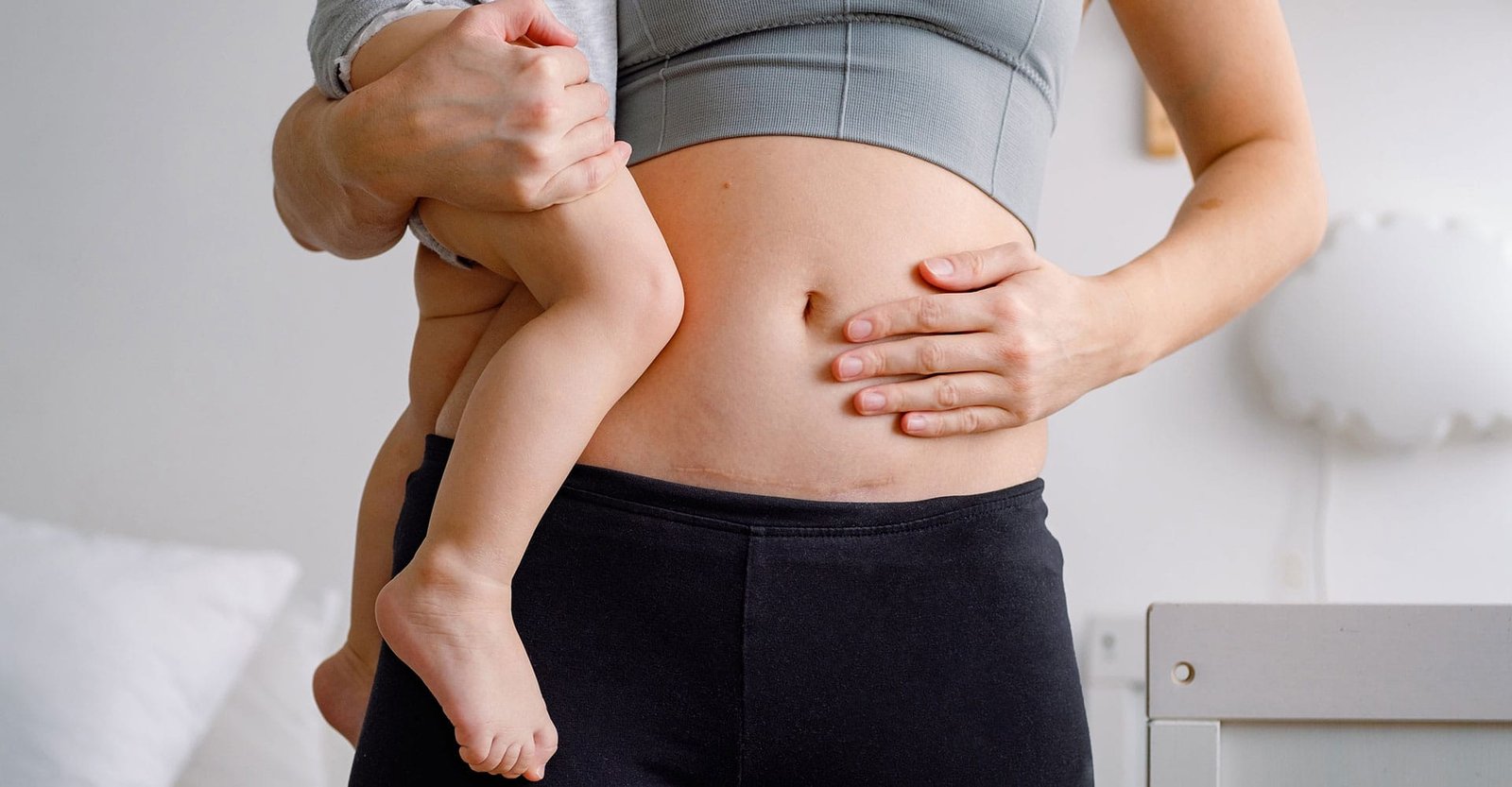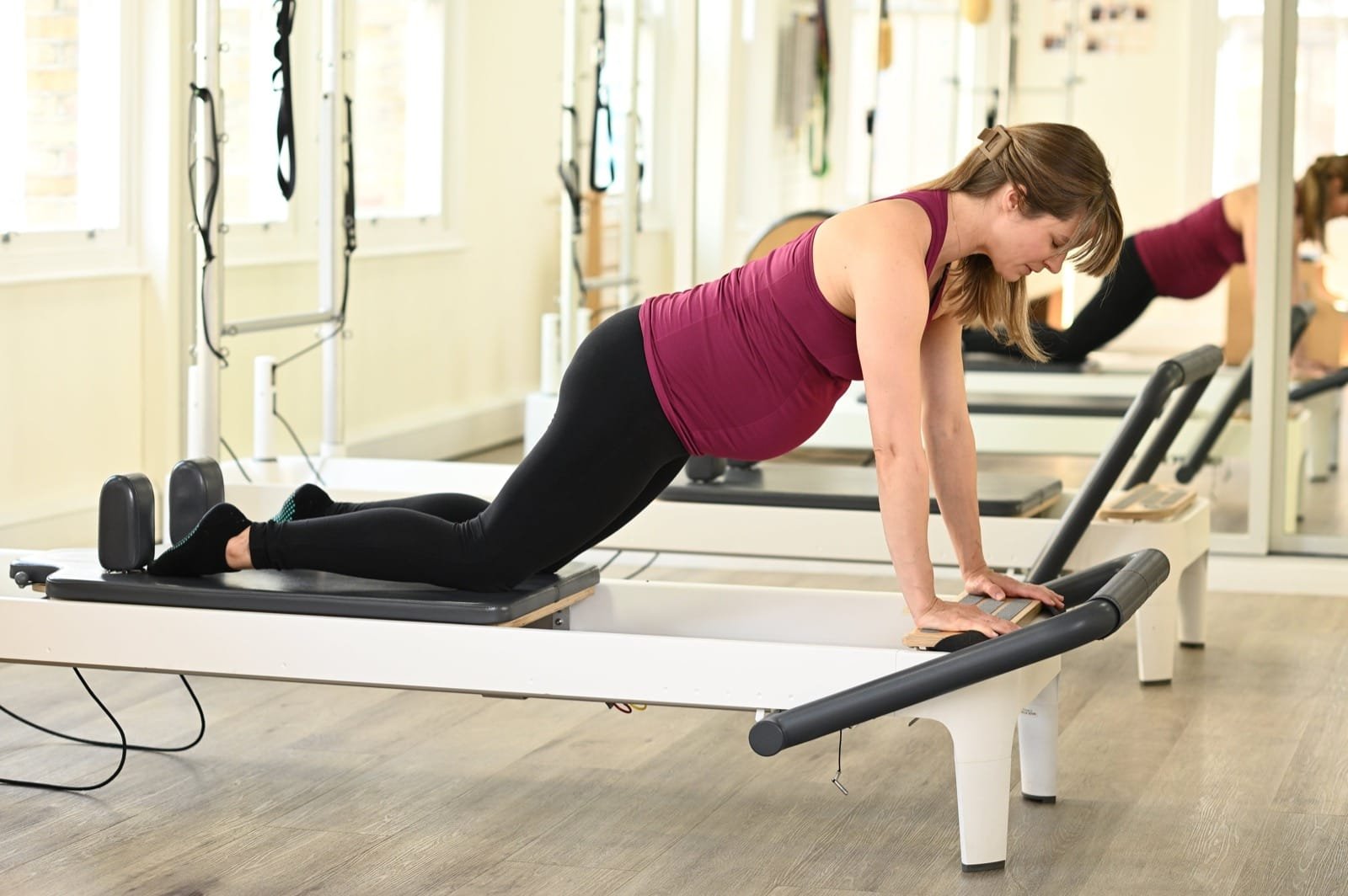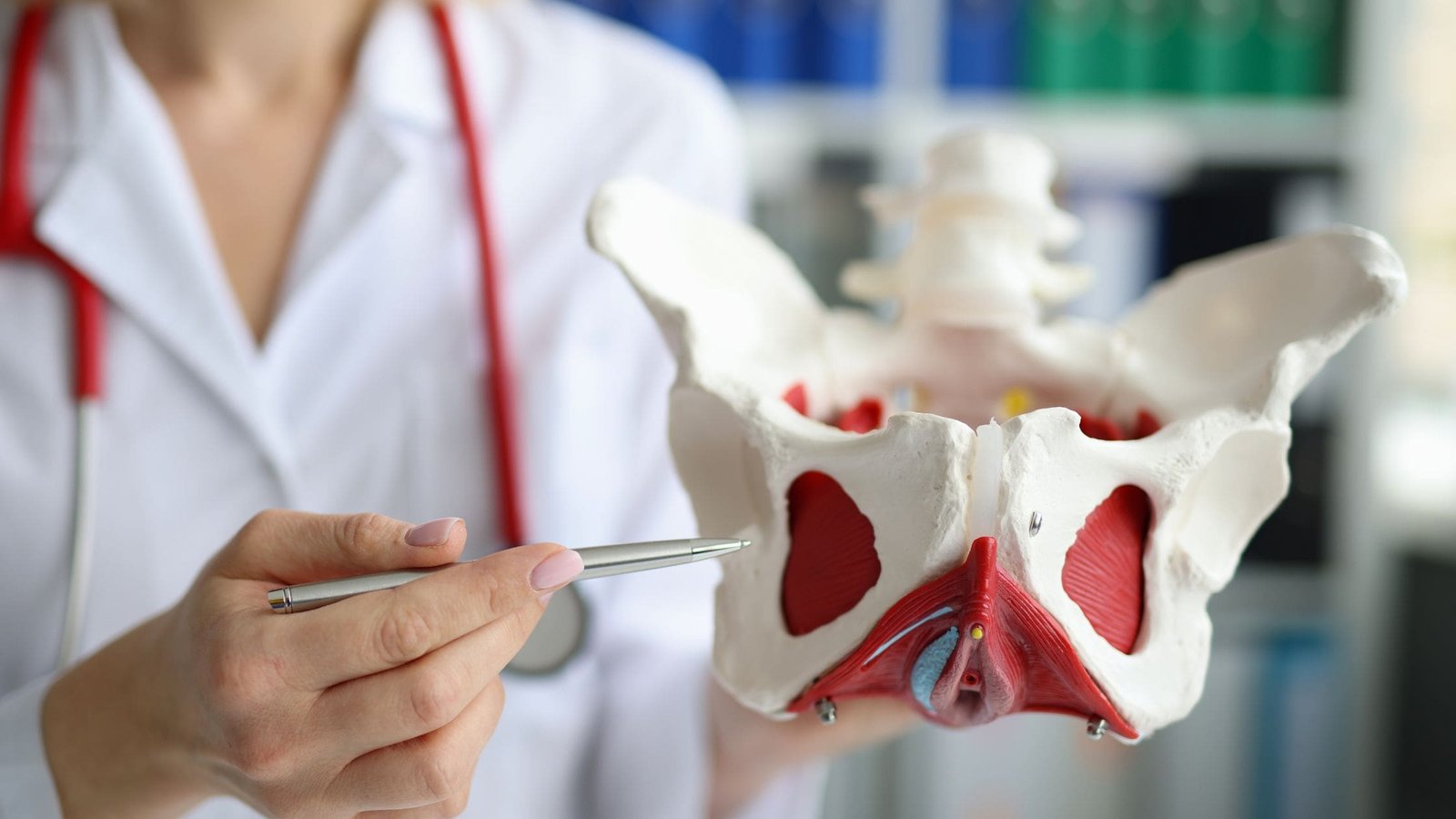Author: Courtney Morren is a physiotherapist and Pilates instructor with a special interest in Women’s Health.
Introduction
Around 30% of females deliver their baby via caesarean section (c-section) which involves a major abdominal operation (NICE, 2021).
A c-section may be planned, after discussion with your midwife or obstetrician due to medical reasons such as breech foetal position, increased maternal age, placenta previa or personal choice (POGP, 2020).
Emergency c-sections may occur due to slow progression during labour and concern for the baby’s health, this can be a quicker mode of delivery which is safer for the mother and baby.
How long after a c-section can you exercise?
You may be wondering how long after a c-section you can exercise? Post-partum, it is recommended that you rest for six to eight weeks, until you have your GP check-up. Once you have been medically signed off, and your scar is clear from any signs of infection, you can follow some of our tips below.
It can be tempting to return to exercise as soon as possible, but it is important not to resume a regular exercise routine before you are ready. Remember, it takes 9 months to grow your baby and it can take many months to recover from pregnancy and birth so we strongly recommend you take time to slowly build your exercise capacity back up.
Pilates is a great form of low impact-based strengthening, so it is perfect for both the post-natal period and for building strength to safely return you to more challenging exercise.
Why is important to seek the guidance of a pelvic health professional?
You should have a six-week post-natal check up with your GP. Generally, this is a conversation about contraception, rather than an in-depth assessment of your scar, abdominals and pelvic floor muscles.
Seeing a Pelvic Health Physiotherapist ensures you receive a thorough assessment including being checked for diastasis recti and gives you more security during the postpartum period to move your body safely.
C-Section Recovery: C-section scar massage
It is common to feel sensitivity around your c-section scar. We suggest starting with light touch of your scar, using a body moisturiser or bio-oil to gently massage around your stomach.
You can then begin scar massage which involves gliding your thumb horizontally in small circles along the width of your scar, then gently up and down, vertically across your scar. This will help to break up any tightness that may occur across your lower abdomen.
Read on for Pilates mobility and strength exercises that are appropriate after your 6-week check-up.
Exercises after c-section: Pelvic floor exercises
Despite not having a vaginal delivery, it is very important to begin your pelvic floor exercises as there has been an increased pressure on your bladder and bowel during the 9-month pregnancy period.
Pelvic floor exercises involve strengthening the muscles which help control the passing of urine, stool and wind. You can begin your pelvic floor exercises prior to your GP check-up if you don’t have any severe signs of incontinence. It is important to achieve early activation of these muscles, but it is vital that you do these contractions properly or you may enhance weakness with incorrect technique.
Your pelvic floor muscles are a hammock shaped set of muscles that attach from your coccyx (tailbone) at the back and to your pubic bone at the front. Within this hammock there are circular muscles surrounding the anus, vagina and urethra.

To engage the pelvic floor – start from the back and work to the front – thinking of drawing up around the back passage as if you were trying to stop yourself from passing wind and then imagine you are trying to stop yourself from passing urine.
We suggest starting with shorter contractions, as if you are stopping the flow of urine and passing of wind at the same time. Imagine you are trying to draw up a blueberry to your stomach through your vagina, and ensure you let this completely relax before starting your next repetition. Once you get the hang of this, you can begin to hold the contraction.
Your aim is 10 x short contractions (and relaxation) and 10 x 10 second holds. Try this 3x daily.
You should not feel any pain or glute contraction, this muscle contraction is internal.
Exercises after c-section: Gentle pelvic mobility
Beginning some pelvic movement encourages gentle core engagement with hip and spinal stretching.
Try lying on your back on a mat, or in bed, with your knees bent to 90 degrees. Place your hands onto your hips and gently arch your spine, tilting your pelvis forwards. You will feel some space beneath your lower back and a stretch across your stomach.
Now do the opposite and roll your lower back down into the ground as if pressing your spine down. You may feel a gentle tightening of your abdominals as they contract.
Try 10 repetitions slowly back and forth. This is known as your anterior and posterior pelvic tilts.
Exercises after c-section: Abdominal activation
If you have minimal pain, and you feel ready to start engaging your abdominals, you can start to activate your transverse abdominus muscle. This is your deep core, which also assists your pelvic floor muscles.
When you complete your pelvic tilt exercises above, you can try to engage with your deep abdominals during your posterior tilt.
Take an inhale breath, when you exhale roll your lower back into the ground and try to draw your abdominals down and in together, so you feel a small tightening under your hands. Inhale and return to neutral, exhale and repeat this. The exhale breath helps to engage your abdominals positively. It is important not to hold your breath during the exercises, or strain to do them.
You can try 6-8 reps, 3 sets throughout the day.
You should not feel any pain or pressure bearing down onto your pelvic floor.
Once you have this connection, you can progress this by trying a leg lift. We call this single leg tabletop. When you exhale and engage your abdominals, try to gently lift one leg to 90 degrees at your knee and hip. Inhale to return the leg down to the floor and repeat aiming for 6-8 reps on each leg, 2 sets in total.

Exercises after c-section: Spinal mobility
Following surgery, alongside postural changes from carrying your baby, feeding and changing, it is imperative to keep your spine moving.
You can try full spinal mobility exercises such as:
Cat/Camel:
On your hands and knees, gently arch your spine and look forwards, then do the opposite and round your spine up to the ceiling.
When you are extending your spine, you will feel a strong stretch across your stomach and scar, which may feel restrictive. This is normal but start with small range and gently increase the movement as you continue. 10 times, 3x daily.
Child’s pose:
Open your hips and sit your bottom onto your heels. Hold for 30 seconds as you try to relax your spine and breathe into your diaphragm.
Open book:
Lie on your side with your knees bent, both of your arms out at shoulder height. Open your top arm up and over, whilst keeping your hips still to stretch your chest and mid spine x6 on each.
C-Section Recovery: Postural advice and general movement
Try to support yourself as much as possible throughout your daily routine. For example, your shoulders and neck may fatigue from carrying baby and feeding, whether you are breastfeeding or bottle-feeding.
Small adjustments like placing a pillow underneath baby when feeding or changing them on a high changing table instead of bending over onto the floor, will help with aches and pains.
Don’t forget the small wins, like getting a bit of fresh air throughout your day to improve mental health, trying to get a small walk in whilst pushing the pram is also great for full body strengthening. Start small and aim to build this up over the next 4 weeks.
Exercises after c-section: Exercises you can do after 3 months
After your pelvic health assessment and return to a guided exercise program, you may feel ready to increase the intensity of your exercises. If you have completed your exercises regularly over the 4-week period, and you have sound form – which means no lower back pain or compensation, no bearing down onto your pelvic floor and no doming or bracing.
This could mean having both legs lifted in table-top, which puts more effort onto your abdominals. We can change the position you are doing your exercises in to make these more challenging, from lying on your back to four-point kneeling, and from sitting to standing.
For example, we could add in four-point kneeling hovers which can progress to full or half planks. You can move from glute bridges to squats holding a weight.
You could be ready to begin low impact classes such as yoga, Pilates, cycling and swimming.
Can I do Pilates after c-section?
Post-natal Pilates is a great choice for progressing your exercise as it is gentle but allows you to progress in a controlled way to more challenging exercises.
Here at Complete Pilates, we specialise in 1:1 Pilates classes, using Pilates equipment. We are a physio-led Pilates company with several physiotherapists and Pilates instructors with additional clinical training in Women’s Health and the post-natal period so you be confident that you are getting the best post-natal exercise instruction.
Exercises after c-section: Returning to higher intensity exercise
A phased return to high intensity exercise is strongly recommended to prevent a sudden increase in intra-abdominal pressure and force on the pelvic floor muscles.
High intensity exercise, such as running or circuit training, which involves high intensity interval training that may include jumping, should only be attempted if you do not have signs of pelvic floor weakness. This includes urinary or faecal incontinence, heaviness or pain in the pelvic region and pain with intercourse.
A return to running program is advised from 3-6 months post-natally at the earliest, if the symptoms above are absent.
It is imperative to see your pelvic floor specialist before you begin your running program, as there are a range of impact and strength-based exercises you need to complete without pain or dysfunction, prior to running. Some examples of these include single leg squats, single leg balance and hopping.
If you are interested in doing Pilates after your c-section, our physiotherapists or clinical Pilates instructors will begin with a questionnaire and an assessment to understand any risk factors as well as your goals.
Come and try Pilates in Chelsea!
Need advice about who to see? Talk to us
Education is key:
These blogs are designed to give information to everyone, however, it is important to remember that everyone is different! If you have not seen one of our therapists and have any questions about injuries, what you have read or whether this may be useful to you, please just ask. We are more than happy to help anyone and point you in the right direction. Our biggest belief is that education is key. The more you understand about your injury, illness and movement, the more you are likely to improve.





